
I'm a title. Click here to edit me
Records of various fighting methods date back thousands of years, the origins seem to be based in the Indian sub continent. About 1400 years ago, this art was conveyed by the travellers of Bodhi Dahrma, a Buddhist Monk from the south of India, across the Himalayas to China, the final destination being the Shaolin Temple. The method of defense was originally termed "Shorin-Ji". Upon reaching the Island of Ryukyu, it was renamed Okinawa-Te. Due to an order by the Satsuma Clan prohibiting all weapons, the practice of Okinawa-Te remained secret. Here it remained for hundreds of years, slowly developing. With the development of trade between China and the island of Okinawa some elements of chinese fighting systems were introduced into those of the native Okinawans. From this mixture a number of slightly differing styles emerged, known overall as Okinawan-te (Okinawan-hand(s) or tang-te (Chinese hand(s))
The man who is generally accredited with the introduction of Karate to the world and is regarded as the founder of modern day Karate is Gichin Funakoshi. Born in 1868 in Shuring, Okinawa, he started training at the age of 11. He trained under the great senseis of his time and was eventually appointed Chairman of Shobukai, the martial arts association of Okinawa. In 1922 Gichin Funakoshi, introduced his particular style to mainland Japan. He was invited to perform before the crown prince of Japan in 1921. This performance led to him being asked to teach the art for the first time in Japan. His influence on Karate is so great that he is credited with being responsible for the changing of the meaning of the Chinese character for "Kara-Te" from Chinese Hand to Empty Hand. This is what his fighting style became known as.
After many years he founded the most successful style of karate, which was called Shotokan by his followers, Shoto being a pen name of Funakoshi's and kan meaning hall or meeting place. Funakoshi set out to make Karate more accessible to the public . He revised and streamlined the components of Karate training, especially the Kata training to make Karate simple enough for every body. Gichin Funakoshi died on April 26th 1957. The devastatingly powerful techniques created and refined by the early karateka have been found to accord with modern scientific principles. Because of its origins, karate practice is heavily steeped in Japanese culture. The accepted prime language of karate is Japanese - the traditional Japanese bow is used as a greeting and a sign of respect and there is a well defined hierarchical structure based on skill and experience.
Shotokan Karate International (SKI) was formed in 1974 by a group of high-ranking karateka headed by the world-famous HIROKAZU KANAZAWA 10th Dan of Tokyo and SHIRO ASANO 9th Dan.
SHOTOKAN KARATE INTERNATIONAL OF GREAT BRITAIN, with HANSHI SHIRO ASANO - then 7th Dan, as Chairman and Chief Instructor was formed with 18 Shotokan clubs, and SKI(GB) was the first national association to affiliate to the newly formed SHOTOKAN KARATE INTERNATIONAL (TOKYO) in October 1974.
HANSHI SHIRO ASANO 9th Dan is the Chief Instructor & Examiner of the SKI(GB) and also Chief Instructor to the SHOTOKAN KARATE-DO INTERNATIONAL EUROPEAN FEDERATION. SKI(GB) is divided into natural, geographical regions, each with a Regional Officer responsible for development and co-ordination within their Region. Each region organises it's own annual courses and regional championships. The association holds numerous major courses and two national championships each year. Kyu gradings are held at several venues throughout the year. All dan grade examinations are held with Hanshi Asano at the Nottingham Headquarters. SKI(GB) teaches pure, traditional Shotokan Karate-do.
